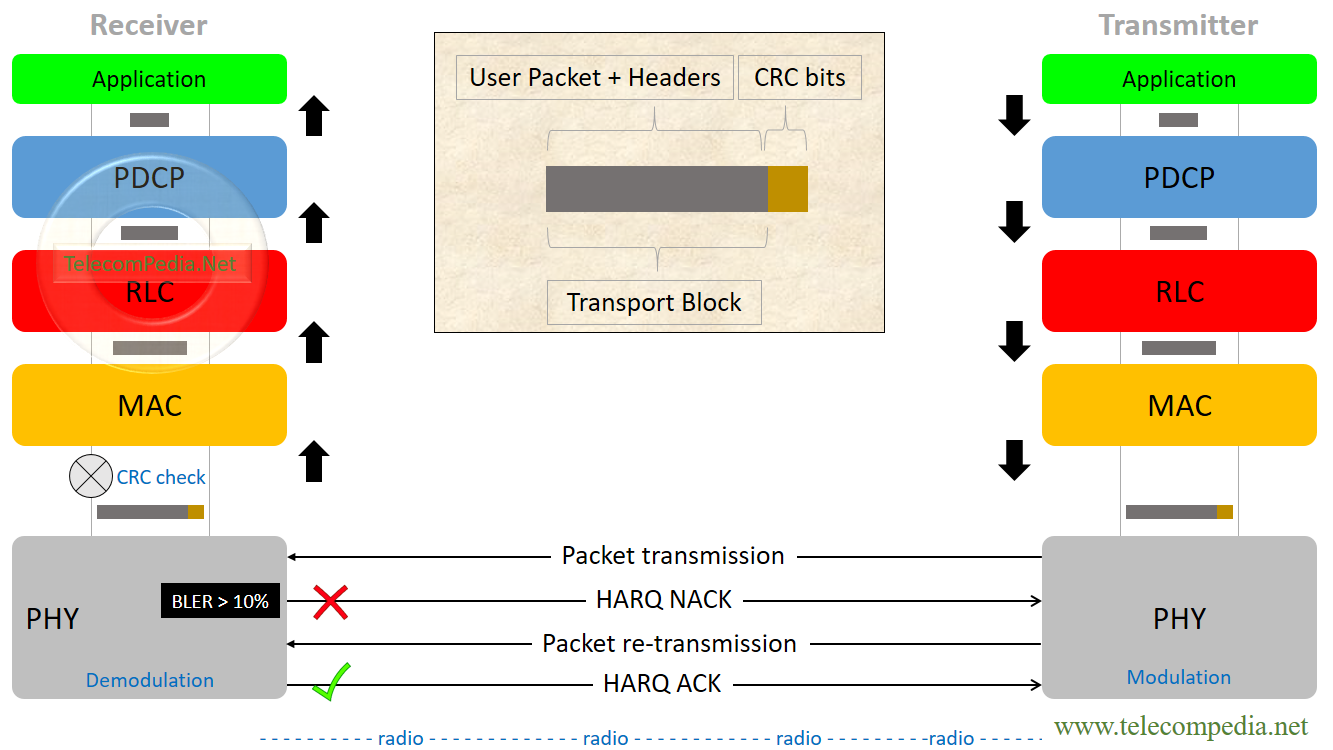“Block Error Rate” or BLER is a measurement type of quality in telecommunication. Simple calculation of the measurement:
BLER (in LTE) = Number of erroneous blocks / total number of received blocks
The calculation is based on CRC (Cyclic Redundancy Check) evaluation which is used for inspection the transport blocks at receiver side. CRC is attached to each transport block and sending by the transmitter, at the destination the transport block is cross checked by the receiver. The transport block is successfully decoded if the attached CRC is matching the CRC calculated by the receiver.
The CRC is a technique used to detect errors in transport blocks.
If the calculation gives undesired result then the receiver will feedback with HARQ NACK message for asking re-transmission. In radio side, typical BLER target is 10% which means the receiver should receive at least 90% successful transmission. If the target is less than 10% then more re-transmission might be required and cause radio resource consuming.
“Error” is unavoidable in wireless communication due to several reasons.
In many radio measurement tools, we can see two kinds of BLER: iBLER and rBLER
iBLER: Initial Block Error Rate
The ratio of data blocks with initial transmission errors to all initial transmission data blocks.
rBLER: Residual Block Error Rate
The ratio of data blocks with transmission errors after initial transmissions and retransmissions to all initial transmission data blocks.
